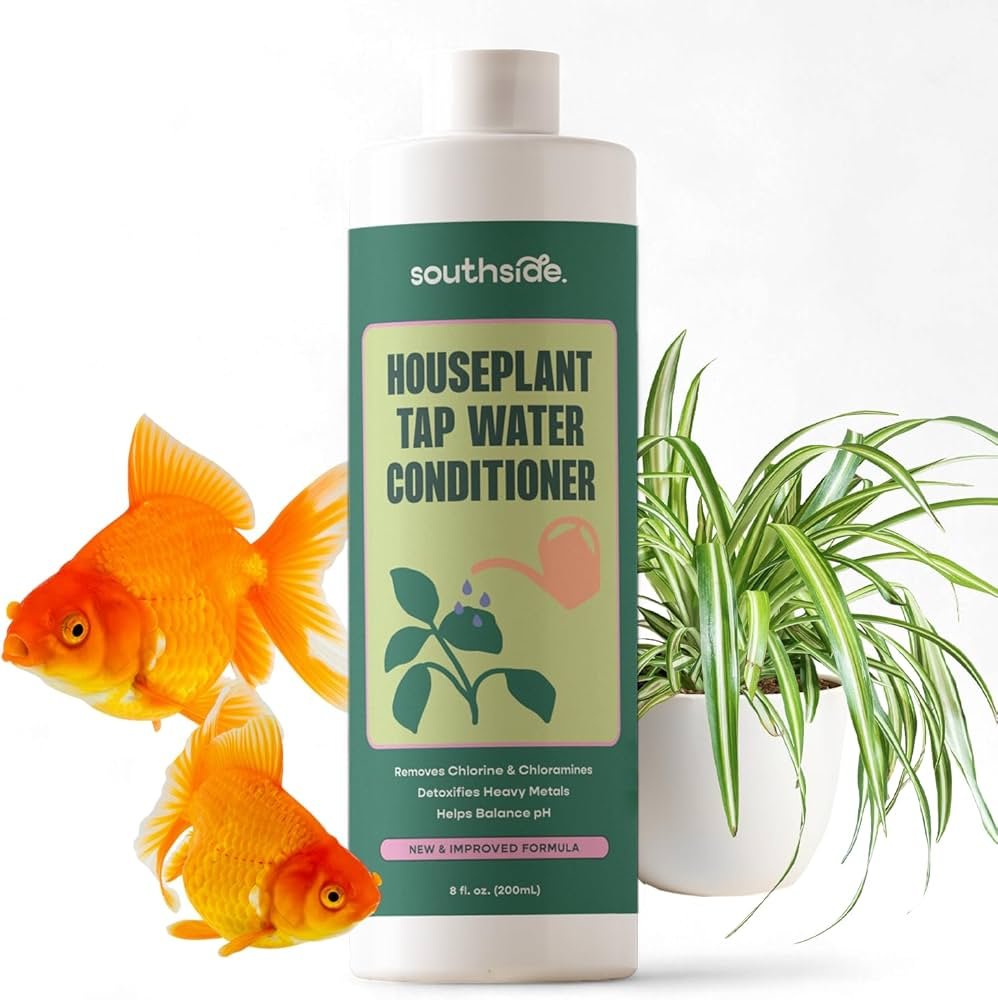Yes, aquarium plants can improve water quality. They absorb harmful toxins and produce oxygen.
Aquarium plants are more than just decoration. They play a vital role in maintaining a healthy tank environment. Plants absorb nitrates, carbon dioxide, and other pollutants. This helps to keep the water clean and safe for fish. They also produce oxygen during photosynthesis, which is crucial for aquatic life.
By adding plants to your aquarium, you create a balanced ecosystem. This can lead to healthier fish and clearer water. In this blog post, we will explore how aquarium plants improve water quality. We will look at the benefits and why they are essential for any tank. Dive in to learn more about the natural way to keep your aquarium thriving.

Benefits Of Aquarium Plants
Aquarium plants do more than just make your tank look pretty. They play essential roles in maintaining a healthy environment for your fish. This section explores the benefits of aquarium plants.
Natural Filtration
Aquarium plants act as natural filters. They absorb waste products from fish and decaying matter. This helps to keep the water clean. Plants like Java Fern and Anubias are good choices. They are easy to care for and effective at filtration.
Oxygen Production
Plants produce oxygen through photosynthesis. This process occurs during the day. Oxygen is vital for fish to breathe. More oxygen means healthier fish. Plants like Vallisneria and Hornwort are excellent oxygen producers. They grow fast and are easy to maintain.
Types Of Aquarium Plants
Are you wondering about the types of aquarium plants that can improve water quality? Aquarium plants not only beautify your tank but also play a significant role in maintaining a healthy environment. They help in oxygenating the water and removing harmful toxins. Let’s explore different types of aquarium plants that can enhance your tank’s ecosystem.
Floating Plants
Floating plants are a popular choice for many aquarium enthusiasts. These plants float on the water’s surface and do not require any substrate. They are easy to maintain and provide excellent coverage for shy fish.
- Duckweed: Small and fast-growing, Duckweed helps in absorbing excess nutrients.
- Water Lettuce: Known for its rosette of light green leaves, Water Lettuce provides shade and reduces algae growth.
- Frogbit: Frogbit has small, heart-shaped leaves and helps in balancing the tank’s ecosystem.
Rooted Plants
Rooted plants are another great option for improving water quality. These plants are anchored in the substrate and have roots that absorb nutrients from the water.
- Anubias: A hardy plant with broad leaves, Anubias is perfect for beginners.
- Amazon Sword: Known for its long, sword-like leaves, Amazon Sword is excellent for large tanks.
- Cryptocoryne: This plant has attractive, wavy leaves and thrives in low-light conditions.
Both floating and rooted plants offer unique benefits. Choose the right plants for your aquarium to create a balanced and thriving aquatic environment.
Role In Nitrogen Cycle
Aquarium plants play a key role in the nitrogen cycle. They absorb harmful nitrates, enhancing water quality and creating a healthier environment for fish.
Aquarium plants play a crucial role in maintaining water quality. They are key players in the nitrogen cycle. This cycle is essential for a healthy aquatic environment. Plants help process harmful chemicals. This makes the water safe for fish and other aquatic life.
Ammonia Absorption
Aquarium plants absorb ammonia from the water. Ammonia is toxic to fish. High levels can be deadly. Plants use ammonia as a nutrient. This process helps lower harmful ammonia levels. It keeps the water clean and safe.
Nitrate Reduction
Plants also help in reducing nitrate levels. Fish waste and decaying matter produce nitrates. Nitrates can cause algae growth and poor water quality. Aquarium plants absorb nitrates. This reduces the risk of algae blooms. It also keeps the water clear and healthy.
“`

Credit: www.reddit.com
Impact On Fish Health
Aquarium plants do more than beautify tanks. They also improve fish health. By enhancing water quality, these plants create a safer environment for your aquatic friends.
Stress Reduction
Plants provide hiding spots for fish. This reduces their stress. Fish feel more secure with places to retreat. Lower stress means healthier, happier fish.
Improved Breathing
Plants produce oxygen during photosynthesis. This process increases oxygen levels in the water. Fish breathe better in well-oxygenated water. Improved breathing leads to better overall health.
Algae Control
Aquarium plants do more than just enhance the beauty of your tank. They also help in controlling algae. Algae can be a nuisance, clouding the water and covering surfaces. Live plants can naturally keep algae growth in check. This is done in several effective ways.
Nutrient Competition
Algae thrive on nutrients like nitrates and phosphates in the water. Aquarium plants compete with algae for these nutrients. Plants absorb these nutrients faster, leaving less for algae. This process limits the growth of algae. It makes the water clearer and healthier for fish.
Shading Effect
Aquarium plants can also control algae by shading. Algae need light to grow. When plants grow tall or have broad leaves, they block light from reaching the algae. Less light means less algae growth. Choose plants that grow quickly and have large leaves for the best shading effect.
Choosing The Right Plants
Aquarium plants not only enhance the beauty of your tank but also play a crucial role in maintaining water quality. The right plants can help absorb harmful chemicals, provide oxygen, and create a natural habitat for your fish. Choosing the right plants is essential for creating a balanced and healthy aquarium environment.

Compatibility With Fish
Choose plants that are compatible with your fish species. Some fish eat plants, while others use them as hiding spots. Research the habits of your fish to select suitable plants. For example, Java Moss works well with most fish. It provides cover and doesn’t get eaten easily. Anubias is another hardy plant. It survives in various conditions and fits well with many fish types.
Tank Size Considerations
Consider the size of your tank when selecting plants. Large tanks can accommodate bigger and more plants. Small tanks require careful plant selection to avoid overcrowding. For smaller tanks, opt for compact plants like Dwarf Sagittaria. It stays small and doesn’t take up much space. For larger tanks, Amazon Swords are a good choice. They grow big and create a lush environment.
Think about plant growth rates too. Fast-growing plants can quickly take over a small tank. Balance is key to maintaining a healthy aquarium.
Maintenance Tips
Aquarium plants can enhance water quality by absorbing harmful toxins. They produce oxygen and reduce algae growth. Regular maintenance ensures these benefits persist.
Aquarium plants offer many benefits. They enhance water quality and create a healthy environment. Proper maintenance ensures these plants thrive. Below are some essential tips to keep your aquarium plants in top shape.
Pruning Techniques
Regular pruning keeps plants healthy. Trim dead or yellow leaves. This stops decay and keeps water clean. Use sharp scissors for clean cuts. Avoid tearing leaves. This can damage the plant. Prune tall plants to maintain balance. This promotes even growth.
Nutrient Management
Aquarium plants need nutrients to grow. Fertilizers provide essential elements. Use liquid fertilizers for easy absorption. Root tabs are great for substrate plants. Monitor nutrient levels regularly. Over-fertilizing can lead to algae growth. Ensure a balanced diet for your plants.
“`
Common Misconceptions
Many people believe that aquarium plants always improve water quality. While they do offer benefits, there are several misconceptions worth addressing. Clearing up these misunderstandings can help you maintain a healthier aquarium.
Plant Decay Issues
One common misconception is that all plant decay harms water quality. In reality, decaying plants can release beneficial nutrients into the water. However, excessive decay can lead to problems.
Decaying plants can increase ammonia levels, which can be harmful to fish. Regularly remove dead plant material to avoid this issue.
Overcrowding Concerns
Another misconception is that having many plants is always better. Overcrowding can cause several issues.
| Issue | Effect on Water Quality |
|---|---|
| Lack of Light | Plants need light to grow. Too many plants block light. |
| Reduced Oxygen | Overcrowding can lower oxygen levels in the water. |
| Competition for Nutrients | Plants compete for nutrients. Too many plants can lead to deficiencies. |
To avoid overcrowding, ensure proper spacing and provide adequate light.
Frequently Asked Questions
Can Aquarium Plants Improve Water Quality?
Yes, aquarium plants can improve water quality. They absorb harmful chemicals like nitrates and carbon dioxide. They also produce oxygen, which benefits fish and other aquatic life.
Do Live Plants Reduce Algae In Aquariums?
Yes, live plants can reduce algae growth. They compete with algae for nutrients, limiting algae’s ability to thrive. This helps keep your tank cleaner.
What Plants Are Best For Water Quality?
Java fern, Anubias, and Amazon sword are great choices. They are hardy, low-maintenance, and effective at improving water quality in aquariums.
How Do Plants Affect Fish Health?
Plants improve fish health by providing oxygen and hiding spots. They also remove toxins from the water, creating a healthier environment for fish.
Conclusion
Aquarium plants greatly enhance water quality. They absorb harmful chemicals and provide oxygen. Healthier fish thrive in planted tanks. Plants also reduce algae growth, keeping tanks cleaner. Choose the right plants for your aquarium. Regular maintenance ensures optimal results. Enjoy a vibrant, healthy aquatic environment with live plants.
Your fish will thank you.





